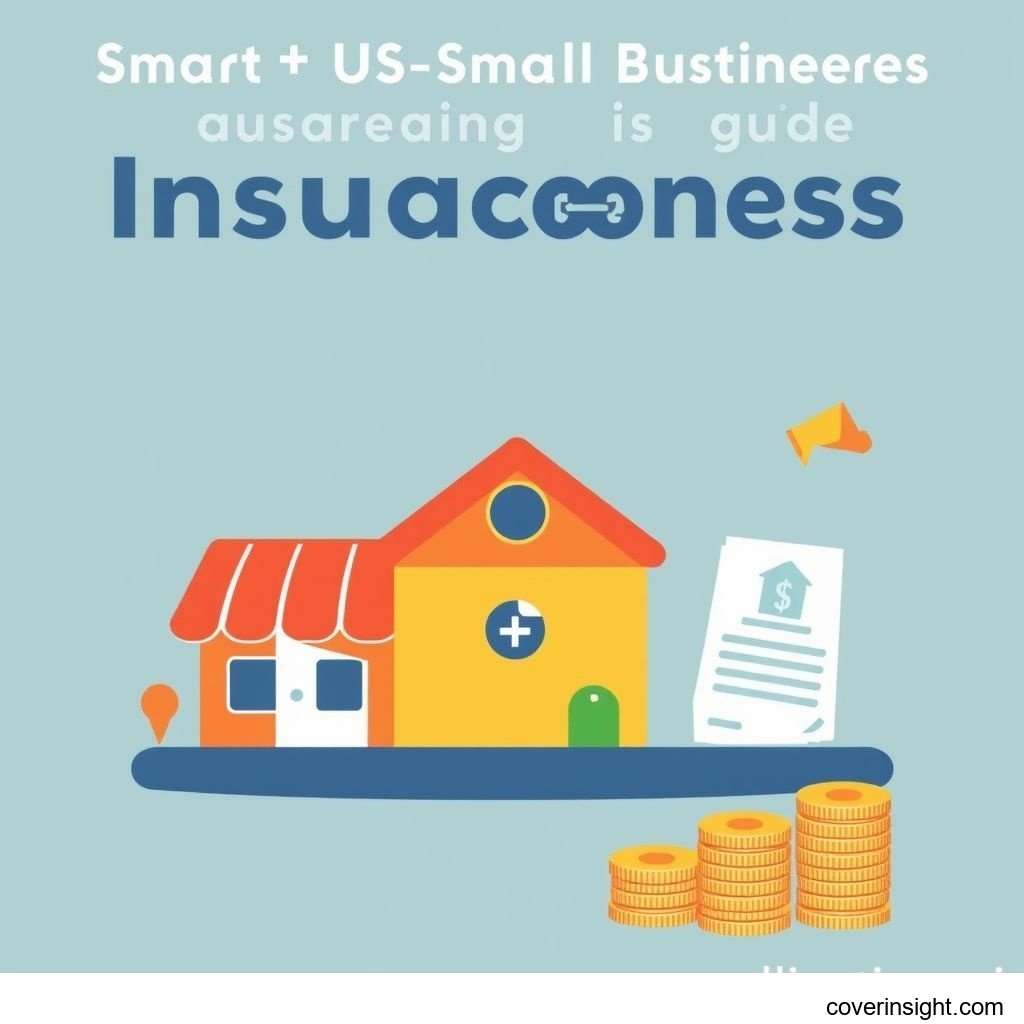Introduction
Navigating the landscape of small business insurance costs in the US for 2025 is more critical than ever. As the economy evolves and new risks emerge, understanding what goes into your premiums and how to secure adequate coverage isn't just a smart financial move—it's an essential safeguard for your enterprise's future. For any small business owner, from a bustling local cafe to a cutting-edge tech startup, insurance isn't merely a line item; it's a foundational pillar of stability, protecting against unforeseen liabilities, property damage, and operational disruptions. This comprehensive guide aims to shed light on what you can expect to pay, what coverage truly matters, and how to make informed decisions to protect your business without breaking the bank. For a deeper dive into the overall landscape, you can always consult broader Insurance Resources Global.
Coverage Details
Understanding what's covered—and what isn't—is paramount when deciphering small business insurance costs. It’s not just about the price tag, but the value and protection you’re getting.
What’s Included
A robust small business insurance package typically comprises several key policies, often bundled for convenience and cost-effectiveness:
-
General Liability Insurance: This is often the bedrock, protecting your business from claims of bodily injury, property damage, and advertising injury that occur on your business premises or due to your operations. Think of a customer slipping in your store, or an employee accidentally damaging a client's property.
-
Commercial Property Insurance: Covers your business's physical assets—buildings, equipment, inventory, and even landscaping—against perils like fire, theft, vandalism, and certain natural disasters.
-
Workers' Compensation Insurance: A mandatory requirement in most states if you have employees, it covers medical costs and lost wages for employees who suffer work-related injuries or illnesses.
-
Professional Liability Insurance (Errors & Omissions - E&O): Vital for service-based businesses (consultants, designers, IT professionals), this policy protects against claims of negligence, errors, or omissions in the professional services you provide.
-
Business Owner’s Policy (BOP): A popular choice for small businesses, a BOP combines general liability, commercial property, and often business interruption insurance into one convenient, cost-effective package. Business interruption covers lost income and extra expenses if your operations are temporarily halted due to a covered event.
-
Cyber Liability Insurance: As digital threats escalate, this coverage is increasingly crucial, protecting against data breaches, cyberattacks, and the costs associated with recovery, notification, and legal defense.
Common Exclusions
While policies offer broad protection, they also come with exclusions. Being aware of these helps prevent nasty surprises:
-
Intentional Acts: Most policies do not cover damages or injuries caused by intentional criminal acts committed by the business owner or employees.
-
Catastrophic Natural Disasters: Standard property policies may exclude specific high-risk events like floods or earthquakes. Separate policies (e.g., flood insurance through the National Flood Insurance Program) are usually required for these.
-
Pre-existing Conditions/Wear and Tear: Property damage due to gradual deterioration, lack of maintenance, or pre-existing issues typically isn't covered.
-
Employee Injuries (if Workers' Comp is applicable): If you're required to carry workers' compensation, employee injuries will generally fall under that policy, not general liability.
-
Certain Professional Negligence Claims: While E&O covers many professional missteps, some highly specific or egregious acts might be excluded.
Cost Analysis
Understanding the drivers behind insurance premiums is key to effectively budgeting and finding the right fit for your business.
Price Factors
Small business insurance costs are far from one-size-fits-all. Several variables come into play:
-
Industry and Risk Level: A construction company faces higher liability risks than a web design firm, reflecting in their premiums.
-
Location: Geographic location significantly impacts costs due to local regulations, differing disaster risks (e.g., coastal areas vs. inland), and regional labor costs for repairs or medical services. For instance, businesses in states like California or New York might see higher workers' compensation rates due to state-specific regulations and higher cost of living/medical care.
-
Number of Employees: More employees mean higher workers' compensation costs and potentially increased general liability exposure.
-
Payroll: Workers' comp premiums are directly tied to your total payroll and the risk classification of your employees' jobs.
-
Business Size and Revenue: Larger businesses with higher revenues generally have more assets to insure and greater potential liabilities.
-
Claims History: A history of frequent or large claims will likely result in higher premiums, as insurers view your business as a higher risk.
-
Coverage Limits and Deductibles: Choosing higher coverage limits (the maximum an insurer will pay) will increase your premium. Conversely, opting for a higher deductible (what you pay out-of-pocket before insurance kicks in) can lower your premium, but means more immediate risk for you.
-
Security Measures: Businesses with robust security systems, fire suppression, or strong cybersecurity protocols may qualify for discounts.
To illustrate the impact of location and industry, consider a recent projection by the Small Business Administration (SBA), indicating that the average general liability policy for a low-risk small business (like an online retailer) might hover around $500-$700 annually, while a more high-risk operation, such as a construction contractor, could easily pay $2,000-$4,000 or more per year just for general liability.
Saving Tips
While essential, insurance doesn't have to break the bank. Here are some smart strategies to keep your small business insurance costs in check for 2025:
-
Bundle Policies: As mentioned, a Business Owner's Policy (BOP) often combines multiple coverages at a lower cost than purchasing them individually. It's like getting a package deal.
-
Implement Risk Management: Proactive measures like safety training, installing security systems, maintaining premises, and robust cybersecurity can reduce the likelihood of claims, potentially leading to lower premiums. For example, a restaurant that regularly inspects its kitchen equipment and trains staff on safety protocols might be seen as less risky.
-
Increase Deductibles: If your business has a healthy emergency fund, consider a higher deductible. This reduces your premium, but ensure you can comfortably cover that initial out-of-pocket expense if a claim arises.
-
Shop Around: Don't settle for the first quote. Reach out to multiple insurance providers or work with an independent broker who can compare options from various carriers. This is where a little legwork can really pay off.
-
Pay Annually: Many insurers offer a discount if you pay your premium in one lump sum rather than monthly installments.
-
Review Coverage Annually: As your business evolves, so do its insurance needs. Annually review your policies to ensure you're not over-insured in some areas or under-insured in others. This helps ensure your Smart 2025 US Small Business Insurance Costs Guide remains relevant.
FAQs
How much does small business insurance cost?
Small business insurance costs vary widely, typically ranging from a few hundred dollars to several thousand dollars per year, depending on the type and scope of coverage. For example, a basic Business Owner's Policy (BOP) might cost between $500 and $2,000 annually for a low-risk business, while comprehensive coverage for a high-risk industry could be $5,000 to $10,000 or more per year. It truly depends on your specific business profile.
What affects premiums?
Premiums are influenced by your industry's risk level, your business location, the number of employees and their payroll, your claims history, the coverage limits you choose, and the deductibles you select. Factors like building construction, safety measures, and even your credit score can also play a role.
Is it mandatory?
Not all small business insurance policies are federally mandated, but some are state-mandated. Workers' compensation insurance is legally required in almost every state if you have employees. Certain industries or professions may also require specific liability coverages by law or contract. For example, many clients will require you to carry professional liability insurance before they'll even consider working with you. For specific state-by-state requirements, it's wise to consult your State Insurance Departments.
How to choose?
Choosing the right insurance involves assessing your unique risks, understanding state requirements, and comparing quotes from reputable insurers. It's often beneficial to work with an experienced insurance agent or broker who specializes in small business policies. They can help you identify potential exposures, recommend appropriate coverage limits, and find policies that fit your budget. Think of it as finding a good tailor for your business—someone who can customize a fit just for you. For broader insights into US insurance, check out US Insurance Home.
Consequences of no coverage?
Operating without adequate insurance is like walking a tightrope without a safety net. The consequences can be catastrophic. Without general liability, a customer injury could lead to a lawsuit that bankrupts your business. No workers' compensation could result in hefty fines, legal penalties, and direct responsibility for employee medical bills and lost wages. A real-world example: A small plumbing company in Arizona faced a lawsuit for property damage caused by a burst pipe they installed. Without professional liability insurance, they were forced to pay out-of-pocket for extensive repairs and legal fees, nearly driving them out of business. It's a gamble no small business should take.
Author Insight & Experience
Based on my experience living in the US and observing the entrepreneurial spirit thrive here, one of the most common pitfalls I've seen small business owners make is underestimating the "what ifs." We pour our hearts and souls into building our ventures, but often neglect to dot our i's and cross our t's when it comes to risk management. It’s easy to view insurance as an expense, a necessary evil. But having personally witnessed a promising local café almost go under due to an unforeseen fire, only to be saved by their robust property insurance, it really drives home that insurance isn't just a cost; it’s an investment in peace of mind and, ultimately, in the longevity of your dream. Don't let a bad day turn into a business-ending disaster. For more information on navigating broader regulatory landscapes, resources like the National Association of Insurance Commissioners can be invaluable.








Comments